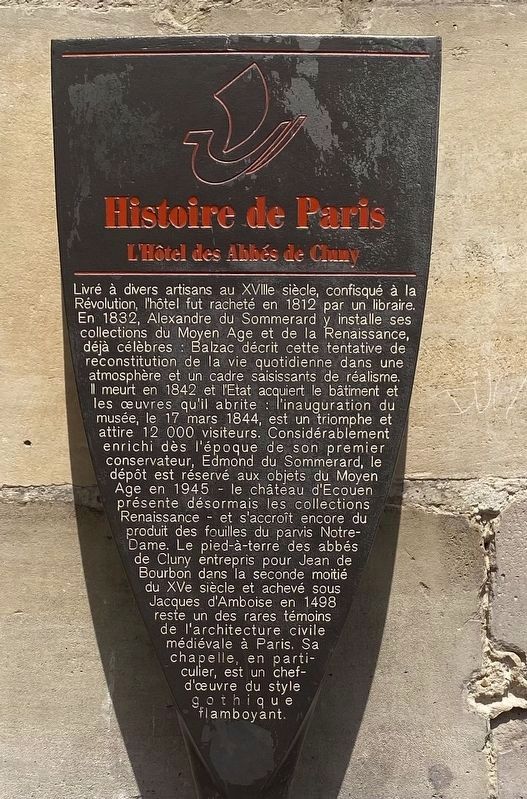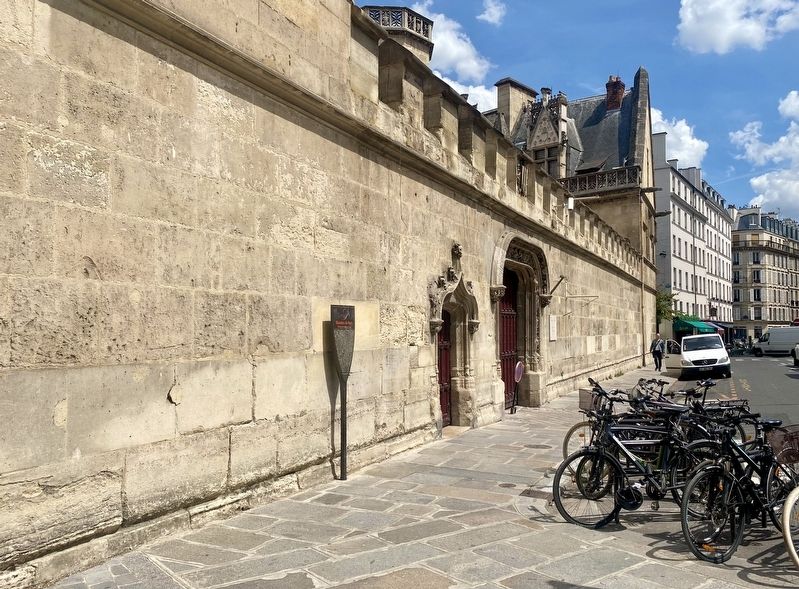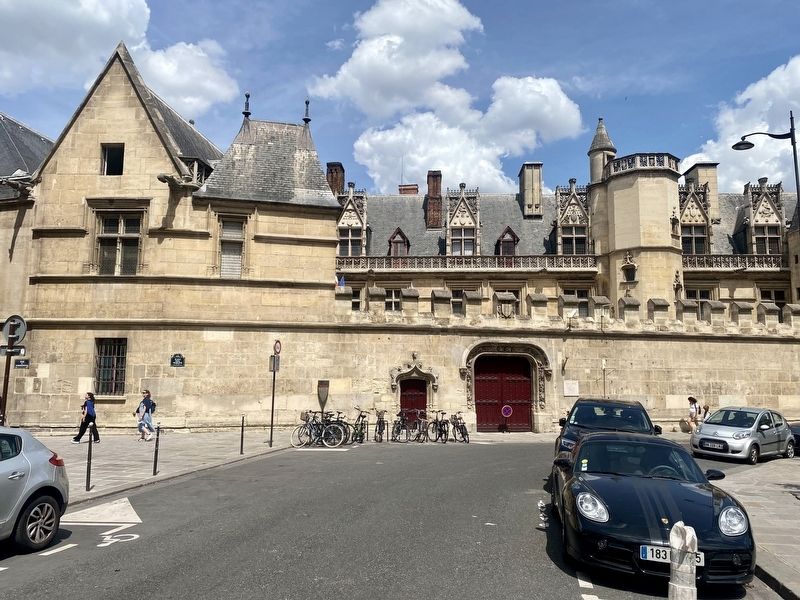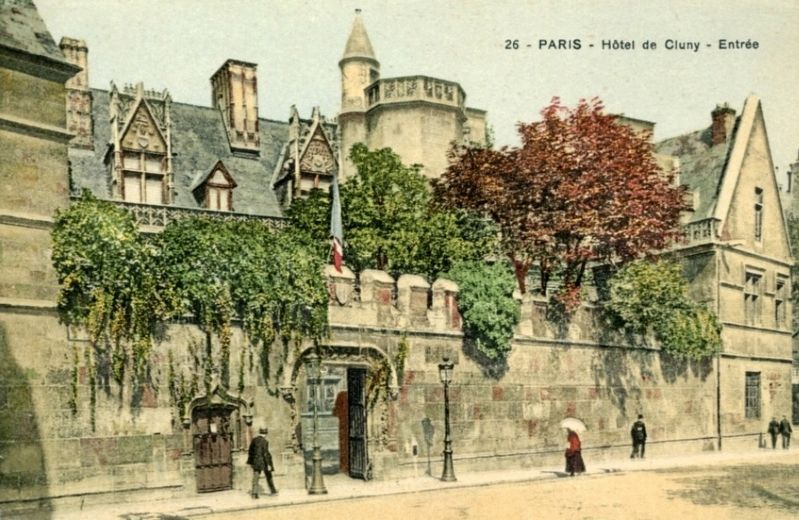Sorbonne in Paris in Département de Paris, Île-de-France, France — Western Europe
L’Hôtel des Abbés de Cluny
— Histoire de Paris —
Having passed through the hands of various artisans in the 18th century, and confiscated during the Revolution, the building was bought in 1812 by a bookseller. In 1832, Alexandre du Sommerard installed his already famous Middle Ages and Renaissance collections there: Balzac describes this attempt to reconstruct daily life in a strikingly realistic atmosphere and setting. Sommerard died in 1842 and the State acquired the building and the works it houses. The inauguration of the museum, on March 17, 1844, was a triumph and attracted 12,000 visitors. Considerably enriched from the time of its first curator, Edmond du Sommerard, in 1945 the collection was reserved for objects from the Middle Ages - the Château d'Ecouen now presents the Renaissance collections - and has been further added to by the finds from the excavations at the Notre Dame Cathedral. The pied-à-terre of the abbots of Cluny undertaken for Jean de Bourbon in the second half of the 15th century and completed under Jacques d'Amboise in 1498 remains one of the rare examples of medieval civil architecture in Paris. Its chapel, in particular, is a masterpiece of the flamboyant Gothic style.
Erected by Ville de Paris.
Topics. This historical marker is listed in these topic lists: Architecture • Churches & Religion. A significant historical date for this entry is March 17, 1844.
Location. 48° 51.019′ N, 2° 20.634′ E. Marker is in Paris, Île-de-France, in Département de Paris. It is in Sorbonne. Marker is on Rue du Sommerard, on the left when traveling east. Touch for map. Marker is in this post office area: Paris, Île-de-France 75005, France. Touch for directions.
Other nearby markers. At least 8 other markers are within walking distance of this marker. Square Samuel Paty (1900) (within shouting distance of this marker); Robert Bottine (about 120 meters away, measured in a direct line); Claude Bernard (about 150 meters away); Saint-Benoît le Bétourné (about 150 meters away); Le Collège de France (about 180 meters away); Jean Dausset (about 180 meters away); Robert Jacques Houbre (about 240 meters away); Monseigneur Joseph NASRALLAH (approx. 0.3 kilometers away). Touch for a list and map of all markers in Paris.
Also see . . .
1. Hôtel de Cluny (Wikipedia, in French).
Overview (in translation): The Hôtel de Cluny is a building located in the heart of the Latin Quarter, in the 5th arrondissement of Paris…This private mansion between courtyard and garden takes its name from the abbots of the order of Cluny who, teaching at the College of Cluny, made it their place of residence from the 13th century. It was only from the 17th century, and until the French Revolution, that it housed apostolic nuncios as well as private individuals…Rebuilt between 1485 and 1510, using certain elements of the contemporary Louis XII style, this building shows the extent to which Parisian architecture is reluctant to new developments brought from Italy and remains, like the Saint Jacques tower, essentially faithful to the Flamboyant Gothic style of the 15th century…In 1843, the State made it a museum which has now become the National Museum of the Middle Ages, or the Cluny Museum .(Submitted on February 6, 2023.)
2. The Hotel of Cluny’s Abbots (Musée de Cluny).
Background: The powerful house of Cluny - This monastic order, which was established in Burgundy and controlled a large network of abbeys across Western Europe, consisted of three colleges strategically located close to the centers of power in Paris and Avignon, as well as in Dole in the territory of the Empire. These establishments are where novices of the order would come to study their academic curriculum. The Parisian college was built in the 13th century just south of what is now place de la Sorbonne. This served as a pied-a-terre for the Abbot of Cluny during his stays in the capital as, located within the immediate proximity, it was the most suited to his status.(Submitted on February 6, 2023.)
Credits. This page was last revised on February 6, 2023. It was originally submitted on February 6, 2023, by Andrew Ruppenstein of Lamorinda, California. This page has been viewed 64 times since then and 16 times this year. Photos: 1, 2, 3, 4. submitted on February 6, 2023, by Andrew Ruppenstein of Lamorinda, California.



